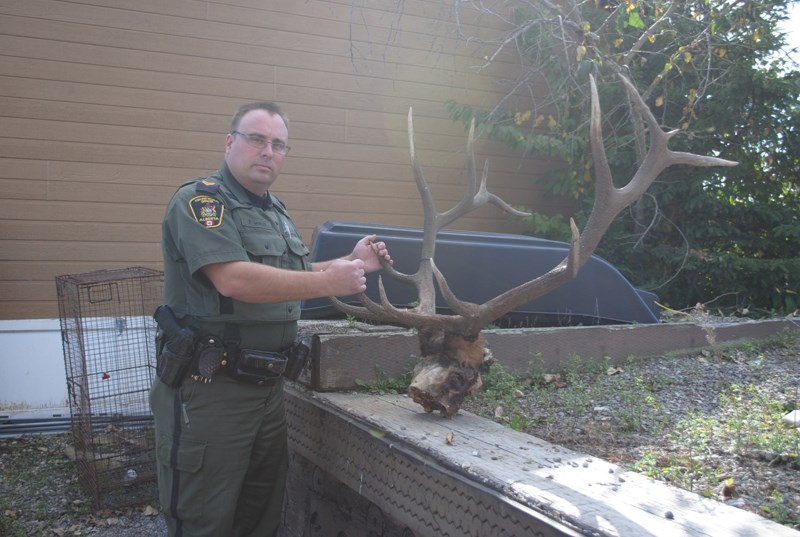The 2014 hunting season is underway and area fish and wildlife officers have already been cracking down on poaching.
Adam Mirus, fish and wildlife officer for the Sundre-Olds area, is asking for members of the public to provide information if they see or suspect any poaching in the area.
“If something seems out of the ordinary it probably is,” said Mirus. “We rely heavily on the public.”
He is asking residents to provide as much information as possible, such as a description of a vehicle or a person, and photos when possible.
However, he advises residents not to approach poachers, as there have been cases in the past where people have been assaulted.
Anyone with any information regarding poaching is asked to call the 24-hour report a poacher line at 1-800-642-3800.
“We've been getting a lot of calls lately. We've had everything going on right from night hunting to animals being shot and left,” he said.
“We've got no shortage of poaching going on; it's like there's always something going on somewhere.”
A person can remain anonymous when they call the report a poacher line, and can receive up to a $2,000 cash reward.
Poachers can be fined up to $50,000 or receive two years in jail. People who poach endangered species can be fined up to $100,000.
Poaching happens all year round but is most common during the hunting season, he said.
“We have animals illegally taken in every month of the year. It's just the frequency is higher in the fall, because there's a hunting season as well so then it makes it easier for someone who is going to poach look like a legitimate hunter,” he said.
In the Mountain View County area, the big horn sheep season opened on Aug. 25 and the bow season for elk and deer opened Sept. 1. The rifle season for elk opens Oct. 25 and the general rifle season opens Nov. 1.
The general hunting season ends Nov. 30, except there are some elk seasons that continue into December and January, he said.
He advises hunters and landowners to be aware of the regulations in their wildlife management unit during the hunting season.
“In the past we've had landowners been told by hunters that they had to allow them on their land to retrieve game or something like that – that's not the case,” he said.
Residents are also reminded to be cautious on the roads coming into the winter season, as the sun sets earlier and rises later and wildlife are out at dusk and dawn.
There is also an increase in collisions with wildlife on the roads during the hunting season.
“We're starting to get into the fall rut, so all the males are going to want to breed with the females, so the time that they start moving around the most is dusk and dawn,” he said. “So you can tend to see more accidents.”
According to a recent press release from Alberta RCMP Traffic Services, if a motorist strikes an animal on an Alberta road, they are responsible to ensure the animal is removed from the road.
In the case of striking an animal, drivers are asked to turn on their hazard lights and call the local highway maintenance company to request assistance if needed.
“By driving away after a collision and leaving an obstruction on the road, another motorist will strike it, causing potential civilian injury or damage,” reads the release.
“In recent weeks it has been observed that there have been wildlife strikes where the carcass was left on the road and then re-struck multiple times, causing damage to a number of vehicles.”
There were 446 animal collisions that caused damage, injury and in some cases death, reported to RCMP across the province during the month of August.
In September of 2013, there were 752 collisions reported to RCMP, and in October 2013, there were 1,116.
“We are anticipating again an increase in animal strikes causing property damage, injury and potentially death in the coming month. Please drive with care and be aware of your surroundings and hazards.”



